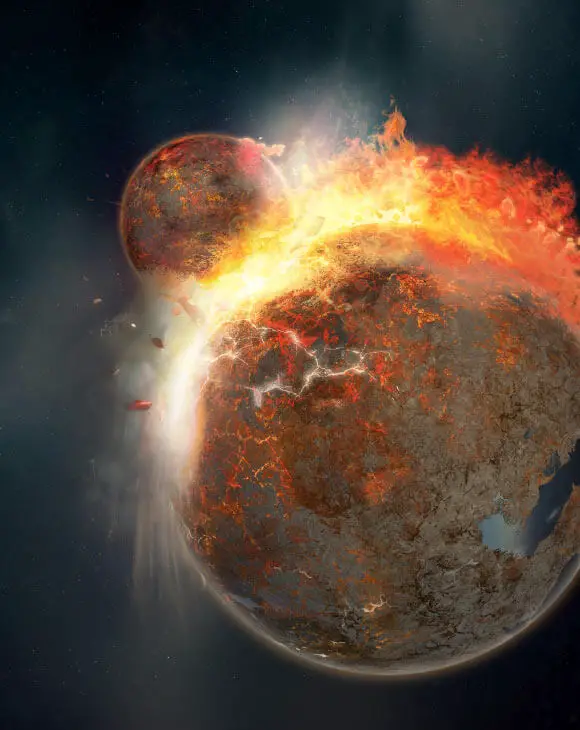You can’t write a year-end geology piece without at least one earthquake story. On February 6, Turkey and Syria were rocked by a pair of massive quakes. The first, a magnitude 7.8, struck in the early morning, and was followed less than 12 hours later by a magnitude 7.7 quake 59 miles from the first. These were followed by more than 30,000 magnitude 5.0 or greater aftershocks along the East Anatolian Fault.
With nearly 60,000 confirmed deaths and more than 100,000 injuries (most in Turkey) these earthquakes were the deadliest since the 2010 Haitian quake, and the largest in the region since 1939. According to the European-Mediterranean Seismological Centre, shaking was felt in Armenia, Egypt, Palestine, Georgia, Greece, Iraq, Jordan, Israel, and Russia. Major damage was reported in Lebanon and minor damage reports came from Israel, Greece, Egypt, and Iraq.
In the 1980s, scientists discovered two “continent-sized blobs” near the center of the Earth. Twice the size of the Moon and seemingly made of different elements than the surrounding mantle, new research suggests these blobs are remnants of the collision between proto-Earth and and another planet that’s been called Theia.
This proto-planetary collision may have set the stage for the formation of the Moon, and these blobs could be left over mantle material from Theia. The findings of the team of researchers from Caltech challenges the idea that the Moon-forming impact homogenized the early Earth’s mantle, and instead may be the reason for its heterogeneity.

Cuneiform tablet unlocks more than just language. Image credit: Howland et al., doi: 10.1073/pnas.2313361120
Part of the geologic evolution of the Earth includes a variable magnetic field created by its molten iron outer core. It has periods of strength, weakness, and directional changes. These changes are recorded in rocks that contain iron rich minerals. As it turns out, these changes are also imprinted in grains of iron-rich minerals used to make clay bricks.
Cuneiform bricks found in archeological sites in Mesopotamia, which have been engraved with the names of reigning kings at the time the bricks were fired, have been found to have recorded geomagnetic signatures after they were heated during firing. These bricks can be used to date magnetic anomalies more accurately.
As amazing as Earth’s geology is, one of the coolest stories of the year has a more out-of-this-world feeling. In August, NASA announced it had chosen its geology team to develop a “Surface Science Plan” for the upcoming Artemis III manned lunar landing mission. Led by Dr. Brett Denevi of the Johns Hopkins University Applied Physics Laboratory, the team will determine the mission’s geological science objectives.
This includes studying some of the oldest material in the Moon, from the south pole region, which could reveal important information about the distribution and composition of the ice in this area. It’s hoped that hydrogen and oxygen can be extracted from the lunar ice and used for life support systems and fuel for future lunar-based colonies and further space exploration.
It’s impossible to wrap up a year in geology without talking about at least one volcanic eruption. On December 3, Indonesia’s Mount Marapi, an explosive strata volcano, spewed super-heated ash 9,000 feet into the air. Known as the most active volcano in the West Sumatran province, its behavior is notoriously difficult to predict due to the shallow nature of its geologic source. For more than a decade, the head of the Volcanological Survey of Indonesia, Hendra Gunawan, has been warning local government agencies that issuing climbing permits for the mountain was dangerous. Even though Mount Marapi had erupted in January, hiking trails were reopened in June, and climbing permits were issued.
Sadly, when the mountain erupted earlier this month, there were 75 people near the crater. Two dozen of them lost their lives, and 12 others were seriously injured. One hiker was quoted as saying the only warning sign was screaming monkeys at the base of the mountain. I’ve written about the dangers of ecotourism, and I wonder what level of cognitive dissonance is needed to intentionally put people in danger for the sake of money. Currently, access to areas within 2 miles of the crater is restricted.
AIPT Science is co-presented by AIPT and the New York City Skeptics.
Join the AIPT Patreon
Want to take our relationship to the next level? Become a patron today to gain access to exclusive perks, such as:
- ❌ Remove all ads on the website
- 💬 Join our Discord community, where we chat about the latest news and releases from everything we cover on AIPT
- 📗 Access to our monthly book club
- 📦 Get a physical trade paperback shipped to you every month
- 💥 And more!













You must be logged in to post a comment.